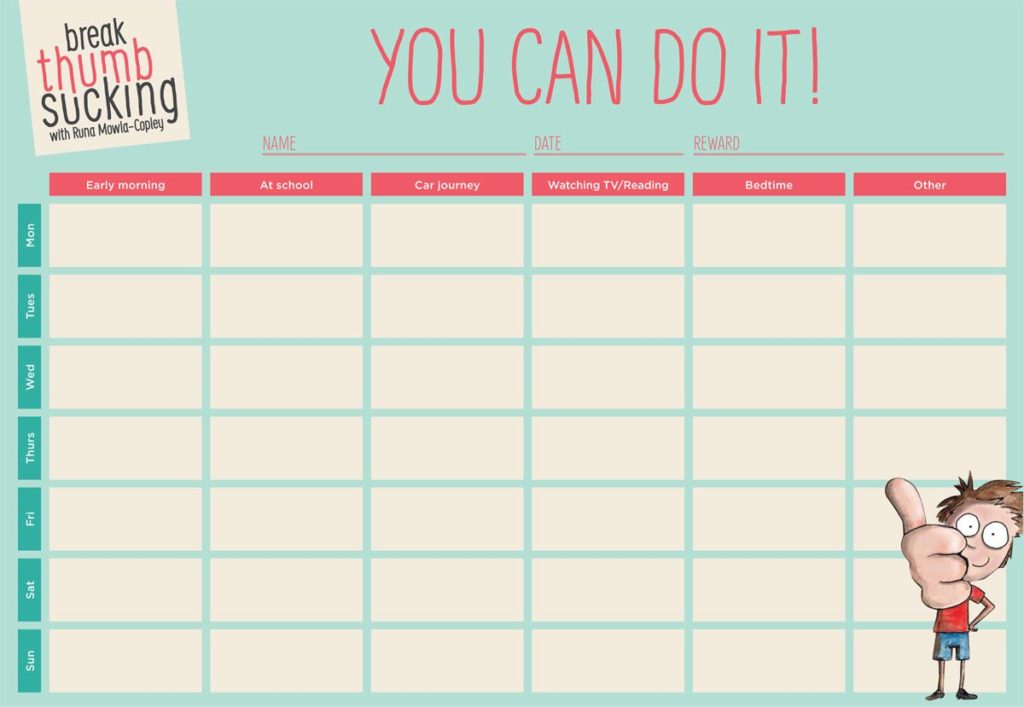Here at Sweet Tooth Pediatric Dentistry we see many patients with thumb or finger sucking habits. While this natural soothing method can be a lifesaver for new parents and can be pretty darn cute at a young age, long term thumb or finger habits can cause concerns for the shape of a child’s mouth and the position of their teeth.
The American Academy of Pediatric Dentistry recommends that children stop their finger or thumb habits by the age of 3. While most children can stop their habits easily and quickly, there are some that will continue long past an acceptable amount of time. It is encouraged that children stop as early as possible to discontinue the pressure on the palate and surrounding teeth. The earlier the habit is discontinued, the less likely any changes to the structure of the mouth will be permanent.
When habits continue past age 4-1/2 to 5, we start to worry about the position of the permanent teeth that usually start erupting by age 6. Continued thumb or finger habits can cause changes to the bite that may require more orthodontic treatment when the child is older, rather than just resolving on its own after the habit is discontinued. Here is a list of how thumb or finger sucking can change a child’s bite:
- Many thumb and finger suckers have top front teeth that stick way out in front of the other teeth, and this can put them at risk for serious damage if there was an injury to the face. As we commonly warn parents, the child may fall “tooth-first” if their front teeth are protrusive secondary to a habit.

- It is also common to find an “open bite” with thumb and finger habits, which refers to when the back teeth are closed but there is a large gap between the top and bottom teeth in the front.

- Another common side effect from thumb or finger sucking is a crossbite. Long term sucking will narrow the palate over time to the point that the top jaw no longer fits properly outside the bottom jaw, causing the child to shift their bottom jaw to the side for a more comfortable bite.

Getting a child who has a very active habit to stop can be quite a daunting task. With a very young child you may get lucky that with some reinforcement, they will be distracted and give up the habit on their own. As they get older, the habit can get much harder to break. In most cases, we need the child to be 100% on board with stopping their habit in order to find success. If your child wants to keep sucking their thumb or fingers, they will usually hide it and find a way to do it.
Dr. Erica suggests keeping the experience positive, offering reinforcement and rewards for changes and motivating your child to want to stop for their own benefit. Sometimes talking about the germs transmitted by dirty fingers can be helpful, or how thumb sucking is a habit for babies and not big kids, or that we don’t want their teeth to grow in crooked are all helpful narratives to share with your child. Make sure to remove trigger items like stuffed animals or blankets and offer gentle reminders during the daytime to encourage your child to stay on track. Many parents find a prize chart helpful – where a child gets a star for every day they’re not caught sucking their thumb or finger, and get a big prize at the end of the week for reaching a certain goal. There are also several great books available that can motivate children to stop sucking, such as “David Decides about Thumbsucking” or the Berenstain Bears “Bad Habit“.

There are certain products that will help deter children from putting their fingers in their mouths, such as Mavala Stop nail polish which has a very bitter taste. This should be used as a reminder so that if a child goes to put their thumb or finger in their mouth on instinct, the bad taste will immediately deter them. Another tool is investing in an item like a “T-Guard” which prevents thumb suckers from getting access to their thumb while they sleep. You can try using a sock, glove, or bandages, but the benefit of a T-Guard is the child is not able to inadvertently remove it in their sleep. If the habit persists beyond a reasonable time and all other methods have been attempted, sometimes we will recommend a permanent intra-oral appliance that blocks fingers or thumbs from resting on the palate. This is generally used as a last resort mechanism, but can be extremely effective.
We know this whole process can be very challenging for children, so we always celebrate the end of thumb or finger habits in our office with a prize and a certificate of achievement. If you child is able to “kick the habit”, be sure to share your successes at your next dental visit so we can all celebrate accordingly!

If you have any questions or concerns regarding your child’s thumb or finger habit, never hesitate to bring it up at your child’s next appointment. We are here to help! And if you need some tips on giving up a pacifier, check out our previous blog post: “Kicking the Pacifier Habit“.
Beth Corona, RDH
Sweet Tooth Pediatric Dentistry
583 Saybrook Road
Middletown, CT 06457
(860) 347-4681
www.sweettoothkids.com


